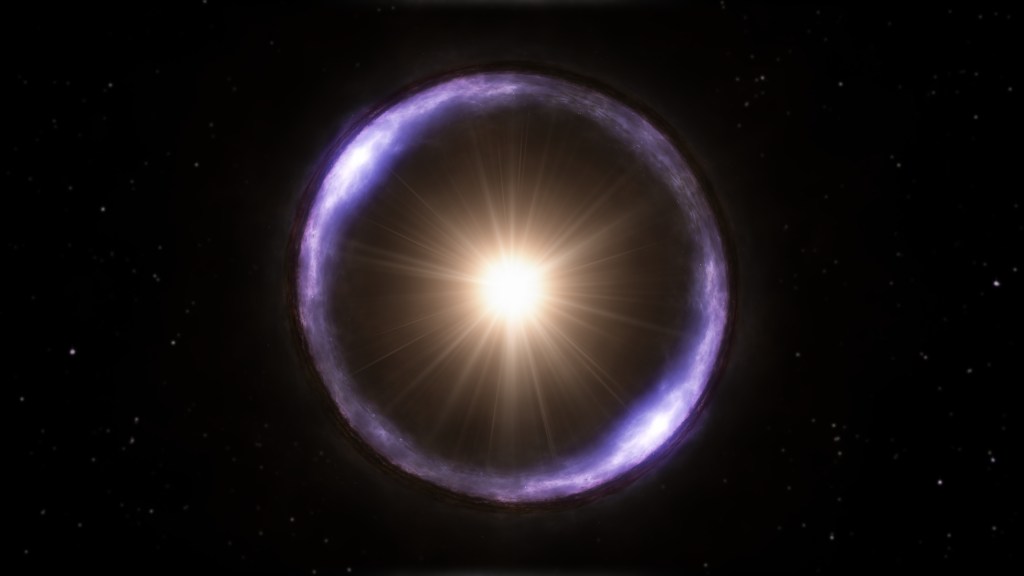What if we glimpsed alien life for the first time by peering through a natural telescope made by the Sun’s gravity? This wild idea, known as a solar gravitational lens (SGL) mission, may sound like an Einsteinian fever dream, but scientists have now found that it is “feasible with technologies that are either extant or in active development,” according to a new study.
An SGL mission could zoom in to see surface features of exoplanets, on scales of just tens of miles, which could provide smoking-gun evidence of extraterrestrial life. It’s no wonder, then, that scientists have speculated about a potential SGL mission for decades; in 2020, NASA funded an investigation into the feasibility of the mission as part of its Innovative Advanced Concepts (NIAC) program.
Videos by VICE
Researchers led by Henry Helvajian, senior scientist in the Physical Sciences Laboratories at the nonprofit research center The Aerospace Corporation, have now shared the initial results of this ongoing NIAC study on the preprint server arxiv, which have not been peer-reviewed. Though the team cautioned that the mission would need to overcome several technical challenges, it could ultimately answer one of humanity’s most fundamental questions: Are we alone in the universe?
“The SGL offers capabilities that are unmatched by any planned or conceivable optical instrument,” according to the study, which was co-authored by Slava Turyshev, a scientist at NASA’s Jet Propulsion Laboratory and principal investigator of the NIAC mission concept. “With its unique optical properties, the SGL can be used to obtain detailed, high resolution images of Earth-like exoplanets as far as 100 light years from Earth, with measurement durations lasting months, or at most a few years.”
“Of particular interest is the possibility of using the SGL to obtain images of high spatial and spectral resolution of a yet-to-be-identified, potentially life-bearing exoplanet in another solar system in our Galactic neighborhood,” the researchers added. “The direct high-resolution images of an exoplanet obtained with the SGL could lead to insight on the on-going biological processes on the target exoplanet and find signs of habitability.”

This tantalizing possibility stems from a mind-boggling phenomenon called gravitational lensing, which occurs when massive objects, including the Sun, bend the very spacetime surrounding them. From the right perspective, this warped spacetime magnifies whatever is located behind it, enabling scientists to spot objects that would be otherwise out-of-view, such as distant galaxies or “rogue” planets floating through space with no star. The trippy sights produced by gravitational lensing were recently showcased in the first public images captured by the James Webb Space Telescope, which included eerily magnified galaxies in the early universe.
The focal point of the Sun’s gravitational lens is located all the way out in interstellar space, some 550 and 900 times the distance that Earth orbits our star, which is much farther than any spacecraft has ventured beyond our planet. Helvajian and his colleagues envision their mission as consisting of a one-meter telescope that is accompanied by a sunshade and propelled by solar sails that produce thrust by capturing solar radiation, in a somewhat analogous fashion to wind-propelled sails.
Even if they were able to overcome the technical hurdles involved with this concept—which include the development of more reliable solar sails and long-duration navigation and communications systems—the team estimated that it would take at least 25 to 30 years for a spacecraft to reach this far-flung location, in the best case scenario.
That said, if a telescope were able to spot alien life, arguably the biggest breakthrough in science, it would be well worth the long wait.
“The SGL mission is challenging,” Helvajian and his colleagues acknowledged. “This paper presents an approach to realizing this audacious mission. The potential science return of such a mission would be unprecedented, comparable even to what would be achieved by an actual interstellar mission, which is not achievable with present-day technology.”
“The anticipated discovery of life-bearing [exoplanets] with the demonstrated feasibility of an SGL mission, should present a compelling case for pursuing this mission,” the team concluded. “It is our only means, in the foreseeable future, to learn details about exosolar sister planets like our home world.”




